HOW CAN WE HELP YOU? Call 1-800-TRY-CHOP
In This Section
COVID-19 Resurgence, Injury Prevention Counseling, Whole Brain Gene Therapy, Children with SARS-CoV-2 Infection, Pulse Oximetry Monitoring
In this week’s roundup of research headlines, read about the latest COVID-19 projections from PolicyLab, ways to improve injury prevention counseling during doctor visits, and how gene therapy could treat the whole brain. And please join us as we celebrate with Chris Bonafide, MD, for his “Top 10” article in the field of Pediatric Hospital Medicine.
COVID-19 Projections: Resurgence Continues Spread to Northeast

David Rubin, MD, MSCE
Children’s Hospital of Philadelphia’s PolicyLab released updated model data that show communities across the Northeast are struggling to fend off the risk for a resurgence of COVID-19, as the South continues to experience significant growth in new cases. Over the next few weeks, researchers are forecasting a rise in the coronavirus along the New Jersey shoreline, up to New Haven, Conn., and as far north as Cape Cod, Mass.
PolicyLab’s weekly projections, covered in a Forbes article and NPR story, demonstrate growing risk for increased COVID-19 transmission up the I-95 corridor from the epicenter of Florida. These forecasts have been realized in Baltimore, which had significant case growth in the last week, and Philadelphia, which the model projects could see 200 cases daily by Aug. 17. Projected case growth across New England, Indianapolis, Denver, and Chicago is concerning evidence that without national virus mitigation standards, this virus surge in the South will continue to threaten other areas.
On an upbeat note, the PolicyLab researchers continued to see an increase in social distancing translate to improved case projections in hotspots across Arizona and California.
“I am encouraged to see that increased social distancing is improving our forecasts in the Southwest … revealing that we can still reverse this tide,” said David Rubin, MD, MSCE, director of PolicyLab. “I can only hope that reticent leaders who have not yet regained control of spiking cases in their own communities will realize that universal masking policies need to be combined with smart sensible approaches to social distancing, like reducing gathering sizes and bar closures, to stop the continued surge of this virus.”
For more information on these COVID-19 projections and PolicyLab’s prediction model, see this PolicyLab blog and Cornerstone story.
CHOP and Penn Study Team Identify Disparity in Virus Exposure in Pregnant Women
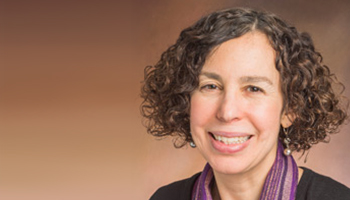
Karen Puopolo, MD, PhD
Researchers found that overall 6.2 percent of pregnant women cared for at two Philadelphia hospitals possessed SARS-CoV-2 antibodies, with significant variation across racial and ethnic groups — 9.7 percent in Black women, 10.4 percent in Hispanic/Latina women, 2.0 percent in White/Non-Hispanic women, and 0.9 percent in Asian women. The clinical meaning of the detected antibody remains unknown.
“Identifying the disparity in virus exposure will ideally help lead to the discovery of what is causing these differences, including factors rooted in systemic racism, and inform public health measures aimed at preventing further infections,” said Karen Puopolo, MD, PhD, an attending neonatologist at CHOP and one of the co-authors of the study.
The research team included investigators from CHOP’s Division of Neonatology and Center for Pediatric Clinical Effectiveness, and the Perelman School of Medicine at the University of Pennsylvania. They performed 1,293 serological tests on pregnant women at two centers in Philadelphia between April 4 and June 3, a period of time when case counts steadily rose in the region. Estimates of virus prevalence need to be interpreted carefully until studies directly comparing pregnant women and the general population are completed. The study appeared in Science Immunology.
Read more in CHOP News and in Penn Medicine News.
Researchers Refine Gene-delivery Technique to Reach Whole Brain

John Wolfe, VMD, PhD
John Wolfe, VMD, PhD, a researcher at CHOP and the University of Pennsylvania’s School of Veterinary Medicine and the Perelman School of Medicine, led a team of investigators who successfully applied a gene therapy to correct defective genes throughout the brain. The study findings appeared in Brain, a journal of neurology.
Working with a large animal model of a type of lysosomal storage disease, alpha-mannosidosis, the team assessed the effectiveness of a gene-correcting therapy. This inherited condition causes severe disease of the brain, naturally occurs in this animal model, and results from a mutated copy of the alpha-mannosidase gene.
The researchers delivered a viral vector capable of crossing the blood-brain barrier and found evidence that the corrected gene had distributed to various parts of the brain, including the cerebral cortex, hippocampus, and mid-brain.
“This is the first example of a large-brain mammal with a bona fide human genetic disease that has intellectual disability as part of the human syndrome where we’ve been able to correct the biochemistry and pathologic lesions in the whole brain,” said Dr. Wolfe in a Penn Today article. “It’s a big advance. Nobody has been able to treat the whole brain of a large-brained animal before. We’re hopeful that this will translate into clinical use in humans.”
For more information on Dr. Wolfe’s research, read the Penn Today article and see this Cornerstone article.
Pulse Oximetry Monitoring Paper Among Top 10 in Field of Pediatric Hospital Medicine
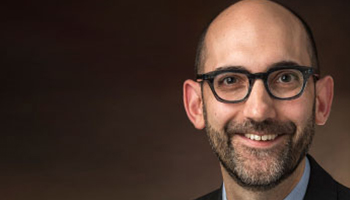
Chris Bonafide, MD
Congratulations goes out to the research team led by Chris Bonafide, MD, research director of General Pediatric Hospital Medicine at CHOP, for their study, “Prevalence of Continuous Pulse Oximetry Monitoring in Hospitalized Children with Bronchiolitis Not Requiring Supplemental Oxygen,” published in the Journal of the American Medical Association. Reviewers named the article one of the top 10 in the field of Pediatric Hospital Medicine for the 2019-20 academic year, and announced their list in the journal Hospital Pediatrics.
“Our inclusion in the top 10 articles for the field this year represents a widespread recognition of the downstream problems that can occur when a medical technology — in our case pulse oximetry monitoring in stable infants with bronchiolitis — is overused,” Dr. Bonafide said. “It will also help to further ignite national efforts to de-implement unnecessary monitoring in populations for which the downsides appear to outweigh the benefits.”
The reviewers considered 12,000 articles from 19 journals, including Lancet and New England Journal of Medicine, and then conducted an in-depth look at 163 articles before selecting the top 10.
“I'm incredibly grateful for the hard work of my team here at CHOP that led this 56-hospital observational study, funded by the National Heart, Lung, and Blood Institute, and of the over 200 individuals from across the U.S. and Canada who contributed to data collection in the Pediatric Research in Inpatient Settings Network,” Dr. Bonafide said. “I'm also very appreciative of the CHOP IRB's support providing oversight to this large and complex study.”
Improving Injury Prevention Counseling During Doctor Visits

Christopher Gaw, MD, MBE
A new study published in the journal Clinical Pediatrics examines how providers and medical trainees perceive and deliver counseling related to injury prevention topics, such as teen driving safety, water safety, and poison prevention. The study also identifies alternative resources and workflows — such as making sure providers have access to a dedicated injury prevention specialist and better use of technology before and after the appointments — that could be helpful in assisting clinicians with counseling.
The findings from a survey of 208 healthcare providers and trainees in acute and primary care settings across the CHOP network highlight the importance of adequate medical trainee education, and provider interest and willingness to adopt novel resources and workflows to assist them in counseling families.
Christopher Gaw, MD, MBE, associate fellow at CHOP’s Center for Injury Research and Prevention and lead author, offers insight on the study results in this Research in Action blog post.
“Though further research is needed to determine which approaches are effective and how best to integrate them into practice, such efforts are already underway at CHOP, including improving primary care provider practices in youth concussion management,” Dr. Gaw wrote.
What Does SARS-CoV-2 Infection Look Like in Children?
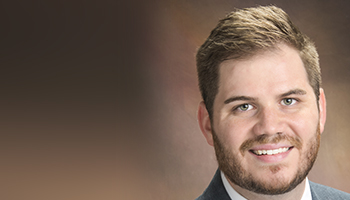
William Otto, MD
CHOP researchers examined the epidemiology of SARS-CoV-2 in children by performing a retrospective case series of patients tested for the coronavirus across the CHOP healthcare network, including clinical features and outcomes of those with positive test results. These findings appearing in the Journal of the Pediatric Infectious Diseases Society, and build on data from prior reports, mostly smaller cohorts from other countries, suggesting a lower prevalence and severity of COVID-19 in children compared with adults.
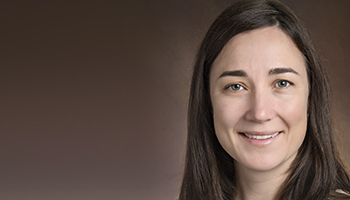
Sarah Geoghegan, MB BCh BAO
“This large cohort of pediatric patients tested for SARS-CoV-2 revealed that the overall frequency of infection was low but varied by testing indication and patient demographics,” noted the authors. “Most children with SARS-CoV-2 infection were asymptomatic or only mildly ill, and few children required intensive care. Two patients died with SARS-CoV-2 infection.”
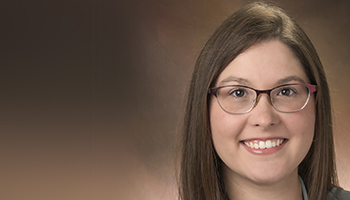
Leila Posch, MD
The three co-lead authors are fellows in the Division of Infectious Diseases at CHOP: William Otto, MD; Sarah Geoghegan, MB BCh BAO; and Leila Posch, MD.
ICYMI
Catch up on our headlines from our July 17 In the News:
- Home Nursing Varies Among Children With Complex Medical Conditions
- COVID-19 Projections: National Strategies Necessary to Prevent Virus Resurgence
- Expert in Vascular Anomalies Joins CHOP
- Adolescent Telehealth Scale-Up Successful During Early COVID-19 Pandemic
- CHOP Researchers Propose New Model to Treat Pediatric Thyroid Cancer
Keep up with our news, stories, and updates in real time by following us on Twitter, Facebook, LinkedIn, or Instagram. Or subscribe to our newsletter to get an email sent every other Friday by signing up here.



